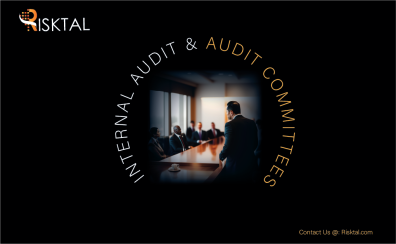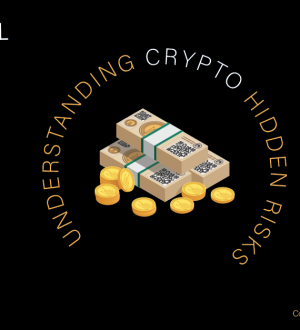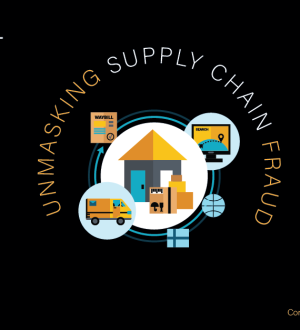
The Relationship Between Internal Auditors and the Audit Committee
A Key to Effective Governance
In today’s complex business environment, organizations face a multitude of risks—financial, operational, regulatory, and reputational. To navigate these challenges, businesses rely on robust governance structures to ensure accountability, transparency, and sound risk management. At the heart of these structures are two crucial players: the internal audit function and the audit committee. Together, they form a powerful partnership that strengthens governance, enhances risk management, and fosters organizational integrity.
This article explores the relationship between internal auditors and the audit committee, highlighting their respective roles, the importance of effective communication, and the ways in which this partnership contributes to an organization’s overall success.
1. The Role of Internal Auditors: Guardians of Organizational Integrity
Internal auditors serve as independent and objective evaluators within an organization. Their primary responsibility is to assess the effectiveness of internal controls, identify risks, and recommend improvements to ensure the organization operates efficiently and in compliance with relevant laws and regulations. Unlike external auditors who focus on financial reporting, internal auditors have a broader mandate, covering areas such as operational efficiency, compliance, and risk management.
In essence, internal auditors are the organization’s watchdogs, ensuring that risks are identified and managed proactively. They conduct audits across various departments, evaluate processes, and provide insights that help improve internal controls. Their findings are critical in ensuring that the organization adheres to its governance and risk management objectives.
2. The Role of the Audit Committee: Oversight and Accountability
The audit committee is a key component of an organization’s board of directors. Composed of independent directors, the audit committee is responsible for overseeing the integrity of the company’s financial reporting, internal controls, and risk management processes. Its mandate includes ensuring that the internal audit function is effective and independent, and that it has the necessary resources to fulfill its responsibilities.
The audit committee provides high-level oversight, ensuring that both internal and external audit processes align with the organization’s strategic goals and regulatory requirements. It serves as the primary point of contact between the board of directors and the internal audit team, ensuring that the audit findings and recommendations are given the attention they deserve at the highest levels of the organization.
3. Collaboration and Communication: Building a Strong Partnership
The relationship between internal auditors and the audit committee is built on trust, transparency, and open communication. Effective collaboration between these two entities is essential for ensuring that audit findings lead to meaningful improvements in the organization’s governance, risk management, and internal controls.
Regular Reporting and Updates
Internal auditors must maintain regular communication with the audit committee, providing timely updates on audit findings, risks, and recommendations. This reporting can take the form of scheduled presentations, audit summaries, and risk assessments. By keeping the audit committee informed, internal auditors ensure that their findings are acted upon by the appropriate stakeholders.
It is common for internal auditors to provide quarterly or annual reports to the audit committee, detailing the status of completed audits, ongoing audits, and key risks identified. These reports help the audit committee prioritize areas that need attention and monitor the organization’s overall risk exposure.
Independent, Unbiased Reporting
One of the key elements of the relationship between internal auditors and the audit committee is the auditors’ ability to report independently and without bias. Internal auditors must have direct access to the audit committee, allowing them to present their findings candidly and without interference from management.
To maintain this independence, the internal audit function often reports functionally to the audit committee and administratively to the chief executive officer (CEO). This reporting structure ensures that internal auditors have the autonomy needed to perform their duties effectively, while still being integrated into the organization’s overall governance structure.
4. Enhancing Risk Management: A Collaborative Approach
The audit committee relies heavily on internal auditors to provide insights into the organization’s risk profile. By identifying and assessing risks across the organization, internal auditors play a pivotal role in helping the audit committee understand the company’s risk exposure and make informed decisions about risk mitigation strategies.
Risk Assessments and Prioritization
Internal auditors work closely with the audit committee to conduct risk assessments and prioritize areas of concern. This involves evaluating financial, operational, and compliance risks and determining which areas require immediate attention. By engaging in regular risk assessments, internal auditors help the audit committee allocate resources more effectively and focus on the most pressing risks facing the organization.
Recommendations for Improvement
Based on their audits, internal auditors provide recommendations to enhance internal controls and mitigate risks. The audit committee plays a crucial role in ensuring that these recommendations are implemented by management. This collaborative process helps the organization maintain strong internal controls and reduces the likelihood of risks escalating into major issues.
5. Challenges in the Internal Audit-Audit Committee Relationship
While the partnership between internal auditors and the audit committee is typically productive, challenges can arise. These challenges often stem from a lack of communication, misalignment of priorities, or resource constraints.
Resource Limitations
One common challenge is ensuring that the internal audit function is adequately resourced. The audit committee is responsible for ensuring that the internal audit team has the personnel, technology, and financial resources needed to conduct comprehensive audits. If resources are insufficient, the internal audit function may struggle to address critical risks.
Lack of Alignment
Another challenge is ensuring that the internal audit plan aligns with the strategic goals of the organization. The audit committee must work closely with internal auditors to ensure that audit activities are focused on areas of highest risk and importance. If there is a misalignment between the audit committee’s expectations and the internal audit team’s focus, important risks may be overlooked.
Maintaining Independence
Although internal auditors need to work collaboratively with management, maintaining their independence is critical. The audit committee must ensure that internal auditors can perform their duties without undue influence from management, even when audit findings may highlight weaknesses within the organization.
6. Conclusion: A Crucial Partnership for Strong Governance
The relationship between internal auditors and the audit committee is a cornerstone of effective corporate governance. Together, they ensure that risks are identified and managed, internal controls are strengthened, and the organization remains compliant with laws and regulations. By fostering open communication, ensuring independence, and working collaboratively, internal auditors and the audit committee contribute to the organization’s long-term success.
In an era of increasing complexity and risk, this partnership has never been more important. Organizations that prioritize strong collaboration between their internal audit function and audit committee are better positioned to navigate challenges and seize opportunities, ensuring they remain resilient and competitive in the face of uncertainty.






